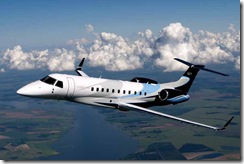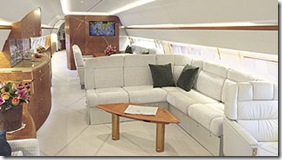 G5 Executive had a problem. The Swiss charter firm flies high-end jets all over the world but they needed a plane for shorter trips. Too often they had to ferry one of the big jets back from the Far East or North America to do a short hop to Moscow or London. At the same time, their clients had come to expect the space and elegance of their Gulfstream V. Their solution? An Embraer Legacy. [Read more…] about Embraer Legacy
G5 Executive had a problem. The Swiss charter firm flies high-end jets all over the world but they needed a plane for shorter trips. Too often they had to ferry one of the big jets back from the Far East or North America to do a short hop to Moscow or London. At the same time, their clients had come to expect the space and elegance of their Gulfstream V. Their solution? An Embraer Legacy. [Read more…] about Embraer Legacy
Business aviation strikes back
Thomas B. Haines, Editor in Chief of AOPA Pilot, summarized in a recent blog post the efforts of business aviation to counter the public relations fallout from when Detroit’s Big Three auto makers arrived at a bailout hearing aboard their corporate jets. In fact, in an ad for their new Beechcraft King Air 350, Hawker Beechcraft goes as far as poking fun at the USA congress with the tag line “Sensible enough to impress any Congressional Committee” while a new Cesna ad promotes corporate aircraft with the tag line: “One thing is certain: true visionaries will continue to fly.” [Read more…] about Business aviation strikes back
Boeing Skyhome
 For some people a Boeing Business Jet is the ultimate status symbol, for others it is a business tool but for a few it is nothing less than a second home. Boeing realised that wealthy individuals and corporate CEOs who spend months each year travelling could use the space offered by the BBJ, a converted 737 airliner, to create a flying home-away-from-home.
For some people a Boeing Business Jet is the ultimate status symbol, for others it is a business tool but for a few it is nothing less than a second home. Boeing realised that wealthy individuals and corporate CEOs who spend months each year travelling could use the space offered by the BBJ, a converted 737 airliner, to create a flying home-away-from-home.
Embraer Phenom 100
 Embraer’s Phenom 100 is the latest entry into the increasingly crowded ‘very light jet’ (VLJ) marketplace. These small personal jets promise to bring private jet luxury to a much wider audience. Embraer touts the Phenom 100’s generous cabin, impressive performance and reliability – but can it compete with its main rivals, the Eclipse 500 and Cessna’s Citation Mustang?
Embraer’s Phenom 100 is the latest entry into the increasingly crowded ‘very light jet’ (VLJ) marketplace. These small personal jets promise to bring private jet luxury to a much wider audience. Embraer touts the Phenom 100’s generous cabin, impressive performance and reliability – but can it compete with its main rivals, the Eclipse 500 and Cessna’s Citation Mustang?
All three aircraft have broadly similar performance. The Phenom is the fastest of the three, while the Mustang claims the edge on range and the Eclipse has the shortest takeoff and landing distance. However, for most owners on most flights these relative differences are so modest as to be unimportant. The choice comes down to other factors: how soon you can get your plane, how much it costs, how comfortable it is and how you feel about the manufacturer.
Price is straightforward. Today [this article was originally written mid-2006] the Eclipse costs $1.47m, the Mustang $2.4m and the Phenom 100 is $2.75m.
The Eclipse and Mustang are likely to be certified later this year, whereas the Phenom 100 was only launched last year and has yet to take to the air. However, being late to the game isn’t necessarily a disadvantage. The Phenom’s competitors have very long waiting lists. Ironically, if you order a plane today, you may get a Phenom 100 first.
“I think the Phenom isn’t trying to go head to head on acquisition price and operating cost. Their selling point is size,” says David Wyndham, Vice President of Conklin and de Decker, an aviation consulting and research firm. In fact, it compares well with the $4.3m Citation CJ1+, a plane in the larger ‘entry-level’ category.
Compared to the Eclipse and Mustang, the Phenom’s cabin is taller, wider and significantly longer. The extra space means more legroom, as well as a wardrobe and refreshments cabinet. The four passenger seats are arranged as two pairs facing one another with fold out tables in-between. In other words, the BMW-designed interior will look like a small but conventional business jet. The main baggage hold is a generous 45 cubic feet – enough for golf clubs or skis, and nearly twice the volume of the Eclipse’s.
Of the three, only the Phenom has a conventional toilet with a solid door. The others make do with curtained-off potties. In the Eclipse, even this inconvenient convenience requires you to sacrifice a seat. If you make long flights, a private toilet is a bonus for modesty and comfort.
The Phenom 100 shares avionics and design features with the higher-performance, six-seat $6.65 million Phenom 300, which is due to be certified in 2009. While the Phenom 100 will appeal to owner-pilots, the 300 is targeted at corporate flight departments, charter and fractional operators.
Cessna is an established private jet player with a good support network, and Eclipse is a well-funded start-up. Embraer’s heritage is different. The Brazilian company makes regional airliners and military planes. It’s not a familiar name but with 17,000 employees and $3.5bn in revenues it is, in fact, the world’s fourth-largest aircraft company.
“This market is underserved in terms of reliable and robust aeroplanes,” says the company’s Luis Carlos Affonso, “but we have lots of experience in designing planes for 3,000 hours’ flight per year.” Affonso hopes that the company’s airliner heritage should mean greater reliability. To back this up the company will offer a fixed-fee maintenance agreement that will take the risk and hassle out of keeping the plane in tip-top condition.
Analysts concur. “As an established aircraft manufacturer, Embraer has a strong advantage over the new players. Specifically, they have a superb sales and support network, and a proven record of delivering aircraft,” says Richard Aboulafia, a vice president and respected aviation analyst at the Teal Group. His only complaint: “who convinced them that Phenom was a great brand name?” If you can get past the name, you could be looking at the most spacious and reliable of the new breed of small jets.
Note: an edited version of this article, also written by Matthew Stibbe, appeared in The Robb Report .